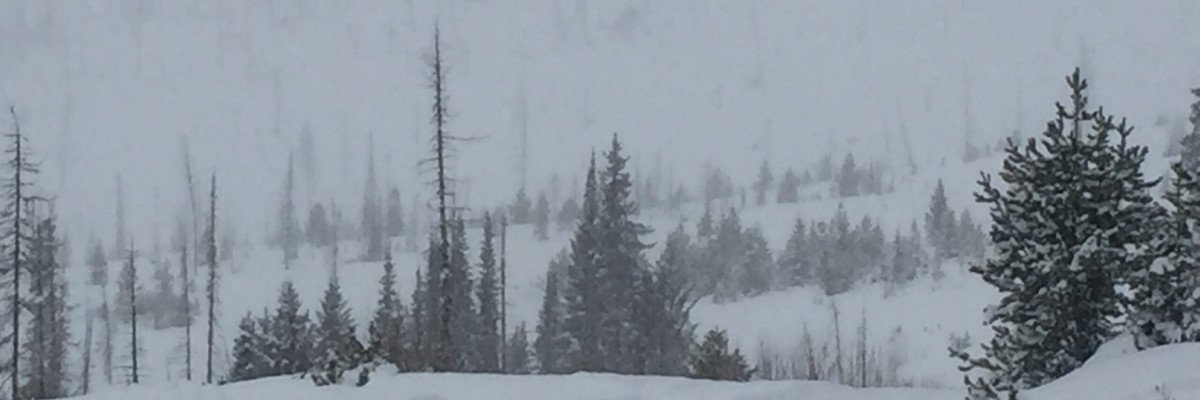The avalanche danger is rated CONSIDERABLE in the west central Montana backcountry. Human-triggered avalanches are likely. Careful snowpack evaluation, cautious route-finding and conservative decision making are essential.
Good morning, this is Travis Craft with the West Central Montana Avalanche Center’s avalanche advisory for December 24, 2015. This danger rating does not apply to operating ski areas, expires at midnight tonight (Dec.24) and is the sole responsibility of the U.S. Forest Service.
Weather and Snowpack
Mountain temperatures are ranging from 12 F to the low 20’s F. Winds are light with gusts 7 mph out of the South. The advisory area received between 2 and 7 inches of new snow in the last 24 hours.
The primary avalanche problem is the persistent “Thanksgiving slab”. This slab is becoming more reactive with the new loading. Steve and I found the facets in the Seeley Lake area and they propagated in our stability tests(pit). Dudley was in the Rattlesnake and had similar failures on the basal facets. This layer can be found on shaded aspects and in shallow snowpacks. The only way to find this layer is to dig into the snowpack. This is a spooky problem and the only red flag is found in the pit.
The second problem is loose dry avalanches or storm slab avalanches. Depending on how much snow was deposited by the storm cycle, either can occur. In the southern Missions we saw a storm slab and in the Rattlesnake which received less snow, Dudley saw loose dry avalanches.
In the advisory area, we have found the “Thanksgiving slab” on many different aspects and at all elevations. In some areas we have had some bullseye data (collapsing or whumpfing), but in most situations the only red flag is in our snow pits. You need to dig to find this clue to instability. Conservative decision making is must.
Weather and Avalanche Outlook
The forecast continues to call for light to moderate accumulations of snow for today and tonight. I would expect the avalanche danger to stay at considerable with this forecast.
Ski and ride safe. I will issue the next advisory on Saturday, December 26.
Happy holidays!














